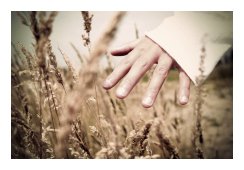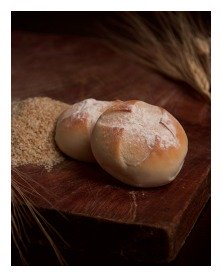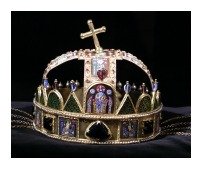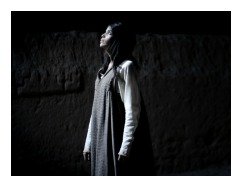Wheat And Tares
Lesson 4.15
The wheat and tares parable demonstrates that Jesus Christ will purify his Body of believers at his second coming. The details are studied in this lesson.
Please read Matthew 13:24-30; 36-43 ESV before beginning free Bible study lessons, #4.15.
Previous Lesson: Parable Of The Net #4.14.
Preliminary Bible Study Questions:
1. What are the tares that Jesus describes in this parable?
2. Will true Christians be judged on their sins?
3. When all is said and done, we discover those whom Jesus was intimately concerned about. What group of people is this?
These Last Judgment Kingdom parables are so extremely important that Jesus issues this command to all of his disciples: "Anyone with ears to hear should listen and understand." He has put us all on alert, that listening is one thing, but understanding is the key. Hear Jesus, and seek understanding, so you KNOW that you will be welcomed by him on Judgement Day.
Let's listen to him and now begin our understanding of these critical truths.
Wheat And Tares Parable Setting

Jesus' wheat and tares parable was told to a large crowd on the beach, from inside a fishing boat. As he sat, he told this Kingdom parable of the wheat and tares.
A Kingdom parable is actually an illustrative story concerning some aspect of the spiritual Kingdom of God. This particular Kingdom parable is found in the midst of the Matthew 13 parables discourse.
The wheat and tares parable speaks of the last judgement of the Kingdom of God, more specifically, the Church age. Like some other parables, Jesus made it easy for us to understand because he explained to his twelve disciples what each of the parable's elements represented in the Kingdom. We'll look at that now.
Wheat And Tares Representation

The wheat and tares parable is fairly easy to understand, even before Jesus' explanation. However, there are some surprising lessons for us to grasp onto and apply to our everyday lives. I'll make the representations clear by adding this list.
Wheat and Tares Parable Symbolism:
- The farmer (sower) = Jesus, the Son of man
- The field = the world
- The good seed = true children of the Kingdom
- The tares (weeds) = children of Satan
- The enemy = Satan, i.e. the devil
- The harvest = end of the Church age
- The harvesters (reapers) = God's good angels

I'd like to say a word about the tares that Jesus referred to in this parable. Well known throughout this region was a weed known as lolium temulentum, or darnel.
Darnel was a devastating plant for wheat farmers because it was indistinguishable from wheat until the wheat grain ripened near harvest time. Milling the two together spoiled the flour product.
The
separation process of the wheat and tares at harvest was a tedious task.
A farmer's harvest is often used in the Scriptures to represent the Last Judgement Day (e.g.
Isaiah 27:12; Hosea 6:11; Joel 3:13; Mark 4:29; Revelation 14:15, etc).
Burning by fire is used profusely throughout the Scriptures to signify
God's divine judgement, wrath, and punishment (e.g. Jeremiah 29:22; Matthew 3:10; Luke 9:54; John 15:6; Revelation 19:20, etc). Let's now look at the parable.
Wheat And Tares Parable
Jesus' wheat and tares parable tells of a farmer, i.e. sower, who planted good seed in his field. The soil was good and the field was prepared well. The farmer and his workers worked long and hard to ensure a strong crop.

Secretly during the night, however, the farmer's enemy sowed weed seeds throughout the field.
The weeds grew along with the plants, but were unnoticed by the workers. It came time to harvest and the workers were shocked to find that the field of wheat was full of tares, i.e. weeds. The farmer was angry and immediately knew his enemy had sown weed seeds amongst the good seeds.
The workers asked the farmer if they should uproot the weeds. The farmer declined because that would ruin the wheat. The farmer planned for his harvesters, i.e. reapers, to sort the wheat and tares at harvest. The wheat would then go to the mill, and the tares would be bundled and burned.
Wheat And Tares Meaning

The wheat and tares parable is a classic farming parable encompassing the entire seasonal growing cycle. From preparation of the farm ground to the harvesting of the grain. Jesus explained the parable to his disciples giving us the true meaning of the wheat and tares.
During the Church age, i.e. the time from Pentecost until his second coming, Jesus saves sinners. He plants the good seed of wheat in the world. The good seed represents his true disciples.
Satan, of course, has his bad seed of tares sown throughout the world, and even inside Christ's church. Those tares found inside the Church are Christian hypocrites, such as Judas Iscariot.
Christ's workers asked if they should uproot the weeds and the farmer told them to wait. Uprooting the tares would hurt the wheat that was already growing. He told them to wait, allowing the reapers to sort the wheat and tares during the harvest.
Jesus made it clear that final vengeance is his, because he will inflict his wrath on those tares who were not transformed while inside his church. His angels will sort out the weeds, i.e. the hypocrites within his Church and all unbelievers. They will be brought before Jesus' great white throne for condemnation. The Christian hypocrites will receive the worst punishment. Christ will sentence all nonbelievers to hell.
The Kingdom of God, after this final purging of weeds, will become pure in the end. This is the ultimate focus of the wheat and tares parable. "The righteous (aka the wheat) will shine like the sun in their Father's Kingdom" (Matthew 13:43). Let's step back a moment and see how Judgement Day works for the believer.
Patience And Mercy

The wheat and tares parable points to a church issue that many people experience. Do weak believers, possibly bordering on unbelief, have the right to partake in fellowship at a local church? This parable seems to indicate that Jesus wants people who are not yet believers, or may never become believers, to be allowed in church.
Jesus lets the hypocrites in his church, but thrashes them on judgement day.
Believers need to be patient with people who are weak in the faith. They are to be given a long leash in church, but with reasonable limitations.
For instance, if a married couple is attending church, and one is a believer while the other is not, patience needs to be the order. The unsaved soul should not be attacked and driven out. Let Christ work in the person's heart, and hopefully a transformation will take place. Instead of attacking, the church should be praying for the person, that God's Holy Spirit falls upon him or her.
Judgement is God's own right, and if the person, on the Final Judgement day deserves punishment, Christ will dole it out in full. Be patient and loving, Friends.
Sheep And Goats Parable

Jesus' wheat and tares parable has a complementary parable, that being the sheep and goats parable (Matthew 25:31-46).
We talked about the goats in our last lesson, so we will talk about the sheep in this lesson. Keep in mind that goats represent rebellious human nature, while sheep represent humility and obedience.
The wheat is similar to the sheep, in that they both represent true believers. The wheat and sheep are blessed by God, and will be made pure. However, they will also undergo Judgement Day at the Last Judgement.
The true believers of God will be judged differently than the hypocrites of the Church and the non-believers of the world.
Jesus, in the sheep and goats parable, also known as the the Final Judgment, judges the sheep, i.e. true disciples, on what they did and what they spoke.

Jesus tells them,
"For I was hungry and thirsty, and you fed me. I was a stranger to you,
and you invited me into your home. I was naked and cold, and you clothed
me. I was sick, and also in prison, and you visited me and cared for
me." This was all a shock to the sheep, Jesus' true believers.
They
were so confused, asking Jesus, "When, Lord, when did we feed you,
invite you in, clothe you, and visit you?"
Jesus Christ told them, "I
tell you the truth, when you did it to one of the least of these
brothers and sisters of mine, you were doing it unto me!" Wow! What a
surprise.
His believers had no idea that their good deeds were actually done to their King. Every time they acted as a Good Samaritan
by becoming a good neighbor to an unfortunate soul, they were aiding
Jesus Christ.
Christ loves his unfortunate ones, and when we minister to them, he is satisfied with our work.
In the end, Jesus gives great rest to his unfortunate ones, and also to those who came to their aid for Jesus' sake. Good deeds, done to glorify God, are what Jesus wants from his disciples.
Real belief in God is assumed in these two stories (John 6:28-29), and their works will reveal their gratitude for salvation.
Believer's Last Judgement
The wheat and tares parable makes a grand statement. At the second coming of Christ, there will be a final judgment, a reckoning for all people of all time. All those who asked "Where is God's justice?" will now finally see the response from God. Justice is coming, and coming soon, I must add. Let's return our focus to the believer's judgment day now.
The
believer's Last Judgement Day will find Jesus Christ welcoming each and
every believer to his glorious throne. All believers, from Adam through
the very last believer in the Church age, will receive a glorified body
upon Christ's return.
We will all become like Jesus (1 John 3:2) as we enter the Kingdom of God in it's perfect and ultimate state. The believer's judgement day will be a glorious day for the Kingdom.

Christ and the saint will review the good works that the saint was supposed to do (Ephesians 2:10), and the good works that he or she actually performed. The believer's Final Judgement will have some tense moments, and we'll discover that we lost many rewards because of our lack of service.
However, in the end, joy will prevail as Christ accepts us.
After the believer's judgement (aka bema seat judgment), the saint hears directly from the mouth of his Savior, "Well done, good and faithful servant. You have been faithful over a little; I will set you over much. Enter into the joy of your master." (Matthew 25:23 ESV).
There is no doubt each of us will stand directly front and center before the glorified, exalted, enthroned King Jesus Christ. We'll first notice his angels, then his glory, and finally, his wounds. His mercy and love will then shower upon us so we can withstand his magnificent glory.
Nothing will come from our lips as we bow in awe of his beauty. Praise God from whom all blessings flow.
Grasp This!
Jesus' first appearance 2000 years ago found him bringing salvation with him (John 3:17). The wheat and tares parable, though, informs us that his second coming is bringing judgement.
All things will be revealed for the unbeliever and the hypocrite.Every sin will be accounted for and eternally punished.

The believers, though, will be evaluated and rewarded for the works they did on earth. The condemned will be sent to hell, the saved will enter the peaceful rest and eternal joy of the Lord.
I often wondered, during my youth, how a person could possibly make God their number one priority in life. Upon meeting God in person on my day of salvation (2 Corinthians 6:2) I discovered the answer to my question.
As salvation and forgiveness fall upon a person, God becomes real and personal. An intimate relationship begins between the believer and Jesus, through the power of the Holy Spirit. Christ's Spirit enters a believer's heart, and changes the believer's life. It's amazing.
If salvation hasn't yet fallen on you, please seek this experience from God. Ask him to forgive your sins, and come to live inside your heart. Ask God to change you, so that you have his heart and mind within you. Tell him you want him to be your top priority and love in your life. Tell him you want to show your gratitude to the world. Tell him you want to serve him by being a good neighbor to the unfortunate ones.
Tell him you want to be a sheep at the last judgement. Sinner's Prayer.
Next Lesson: Parables Of The Bible #4.16.
Bible Study Questions:
1. The wheat and tares parable shows us to be patient with those inside the church who have weak or no faith. What measures can be taken to ensure that the lost aren't attacked within Christ's local churches?
2. Why aren't true believers (aka saints) required to stand before a final judgment for their life's sins? Or, are they? Discuss.
3. Discuss exactly the things that will be used by Christ to judge the real disciples (aka saints). What works can you add to our short list?
Inspirational Bible Verses:
So whether we are at home or away, we make it our aim to please him. For we must all appear before the judgement seat of Christ, so that each one may receive what is due for what he has done in the body, whether good or evil. Therefore, knowing the terror of the Lord, we persuade others. But what we are is known to God, and I hope it is known also to your conscience. 2 Corinthians 5:9-11 ESV
So we have come to know and to believe the love that God has for us. God is love, and whoever abides in love abides in God, and God abides in him. By this is love perfected with us, so that we may have confidence for the day of judgment, because as he is so also are we in this world. 1 John 4:16-17 ESV
Prayers Of Thanksgiving:
Dear Father, the wheat and tares parable helps me understand that you are in charge of your local church. Help me to refrain from condemning anyone, and in fact, showing love and patience towards them. Help me to serve the unfortunate ones that are before me. Help me to plan how to go about serving those people in the world. Supply the funds and other means to help the poor, hungry, needy, hurting, strangers and prisoners across the globe. Thank you for your mercy. In Christ's name. Amen
After sharing this Bible study lesson on Facebook or Twitter below download your Free Printable Bible Study Lessons: Wheat And Tares #4.15. Please Donate To GG.com!
Return to Parables Of Jesus page. Return to GraspingGod.com's Homepage.
Special Note: I'm grateful to Big Book Media & Free Bible Images, Stock Exchange, Morgue Files, and Stock Photos For Free for the use of their photos for Bible parables Wheat and Tares and Sheep and the Goats.
